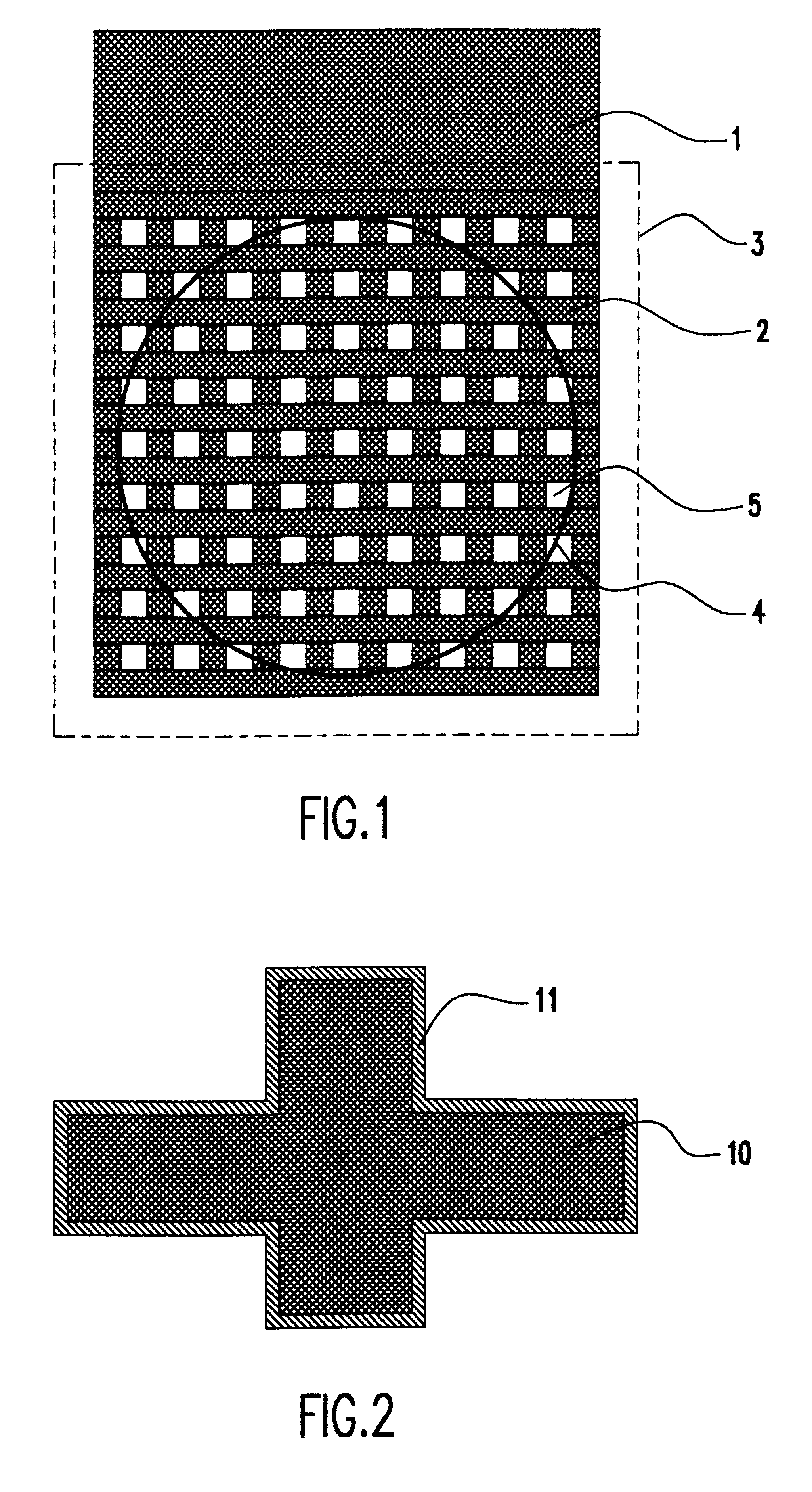Self-aligned last-metal C4 interconnection layer for Cu technologies
- Summary
- Abstract
- Description
- Claims
- Application Information
AI Technical Summary
Benefits of technology
Problems solved by technology
Method used
Image
Examples
Embodiment Construction
This invention makes use of an optimized pad design of the last metal copper pad structure. The structure is comprised of an array of silicon dioxide "pegs" arranged in a lattice work pattern throughout the damascene copper last-metal pad. The pegs provide supports to facilitate chemical mechanical polish (CMP) of the copper last metal and provide "islands" of good adhesion for a silicon nitride overlayer. Silicon dioxide peg size is large enough so that (after CMP of the copper last metal) a smaller peg of silicon nitride can be formed on top of the oxide peg using a non-critical block mask. For example, the silicon dioxide peg might be 10 .mu. square and the overlayer silicon nitride peg might be 7 .mu. square.
FIG. 1 shows an example of an orthogonal copper wiring mesh with pegs. By designing the nitride peg mask so that the nitride peg is contained within the oxide peg structure, a narrow overlap of a metal (or stack of metals having the properties that the metal has good adhesio...
PUM
 Login to View More
Login to View More Abstract
Description
Claims
Application Information
 Login to View More
Login to View More - R&D
- Intellectual Property
- Life Sciences
- Materials
- Tech Scout
- Unparalleled Data Quality
- Higher Quality Content
- 60% Fewer Hallucinations
Browse by: Latest US Patents, China's latest patents, Technical Efficacy Thesaurus, Application Domain, Technology Topic, Popular Technical Reports.
© 2025 PatSnap. All rights reserved.Legal|Privacy policy|Modern Slavery Act Transparency Statement|Sitemap|About US| Contact US: help@patsnap.com



